There are two different species of buffalo that go by the name “water buffalo,” the domestic water buffalo and the wild water buffalo. However, we call the domestic version simply “water buffalo” more frequently than the wild species.
For this reason, we will be focusing on the domesticated species Bubalus bubalis instead of the wild Bubalus arnee. Read on to learn about the water buffalo.
Description of the Water Buffalo
These large animals are somewhat cow-like in appearance, with stout bodies and thick horns. Their horns extend outwards from their heads, and then point back towards their shoulders. These large mammals vary in color, some are black, others slate gray, and some rare specimens are albino.
Males are slightly larger than females, and stand 52 in. tall at the shoulder. They are quite heavy animals, and can weigh anywhere from 660 lbs. to 1,210 lbs., though it is not unusual for them to surpass 2,000 lbs. or more.
Interesting Facts About the Water Buffalo
These large members of the Bovidae family are related to bison, cows, antelope, wildebeest, sheep, goats, and more. Learn more about what makes this particular species unique below.
- Water Buffalo Milk – Just like domestic cattle, people drink milk from these animals in the areas where humans keep them. However, the milk of this species varies drastically from that of cattle. This buffalo’s milk is much higher in protein and fat than cow’s milk.
- Rice Paddy Fields – People rely heavily on these animals to plow their rice paddies. Because rice fields are under water, they are perfectly adapted to working in these semi-aquatic environments. Their large hooves are incredibly flexible, which allows them to move through flooded regions without getting stuck.
- Water Buffalo Domestication – Scientists believe that humans domesticated these animals around 5,000 years ago somewhere in India. They also domesticated them separately in China, around 1,000 years after that.
- Water Buffalo Types – There are two different types of water buffalo, though both are the same species. Humans domesticated the river buffalo in India, and the swamp buffalo in China. There are a number of different breeds of each type.
Habitat of the Water Buffalo
These large bovines require only one factor to survive in a particular habitat, water! As their name suggests, water buffalo are quite fond of water, and like to submerge themselves whenever possible.
The two different types have different preferences. River buffalo like areas with deep water that they can swim in. Swamp buffalo like areas with shallow, muddy water, which they create mudholes in.
Distribution of the Water Buffalo
There are several countries with large populations of these creatures. The highest populations live in India, Pakistan, China, Egypt, Nepal, Iran, Myanmar, Italy, Turkey, and Vietnam.
These large mammals also live in South America, Australia, some areas of North America, and more. Most populations are agricultural herds, but some areas are invasive or escaped animals.
Diet of the Water Buffalo
As their aquatic lifestyle would suggest, they like to eat water plants. They will even fully submerge themselves underwater, and then lift their heads to chew and swallow their watery food. They eat a wide assortment of aquatic plants, but will also eat other types of plants as well.
Some aquatic foods include reeds, water canes, flowering plants, water hyacinth, rushes, and more. Farmers also feed them alfalfa, banana leaves, peanut, maize, sugarcane, soybean, turnips, dates, and more.
Water Buffalo and Human Interaction
These domestic bovines interact with humans in a number of ways. Most water buffalo work in close proximity to humans for milk production or field plowing. Even children handle and care for them in a family! Depending on the area, women usually care for the milk production buffalo, while men work with the working buffalo.
Domestication
The two types of domesticated water buffalo came about approximately 5,000 and 4,000 years ago. Humans domesticated the first type in India, and the second type in China. Researchers believe that the wild water buffalo, Bubalus arnee, was the ancestor of domestic water buffalo.
Humans breed them selectively for milk production, meat production, docile behavior, or whatever the people need them for. There are many different breeds of water buffalo across the regions that they are popular.
Does the Water Buffalo Make a Good Pet
Water buffalos do not make particularly good house pets, but they are good farm animals. They have undergone thousands of years of domestication. However, their needs vary greatly from the average farm animal. They must live in areas with plenty of water for them to swim and wallow in. They are also quite large, and their enclosures must be sturdy enough to hold them.
Water Buffalo Care
The care of these creatures varies based on what humans need them for. Milk production water buffalo live different lives than buffalo used to plow fields. Owners of milk buffalo usually feed them additional vegetation and feed to increase their milk production. Their enclosures have large water bodies with plenty of aquatic vegetation for them to eat.
Behavior of the Water Buffalo
Water buffalo live in herds, sometimes up to 30 animals or more. They are active during the day and at night, depending on where they live. Most herds contain females and their babies, while males are more solitary.
Members of the herd spend most of their time eating, resting, and wallowing in the water or mud. Mudholes protect the buffalos’ skin from sunburn and biting insects, while also keeping them cool.
Reproduction of the Water Buffalo
These animals do not have a mating season, but usually avoid breeding in extremely hot conditions. Males breed with as many females as possible, and a single male can mate with up to 100 females in a single year.
The different breeds have slightly different reproductive rates and habits. Most have a gestation period between 281 and 334 days long. The weaning process varies from breed to breed, and region to region.

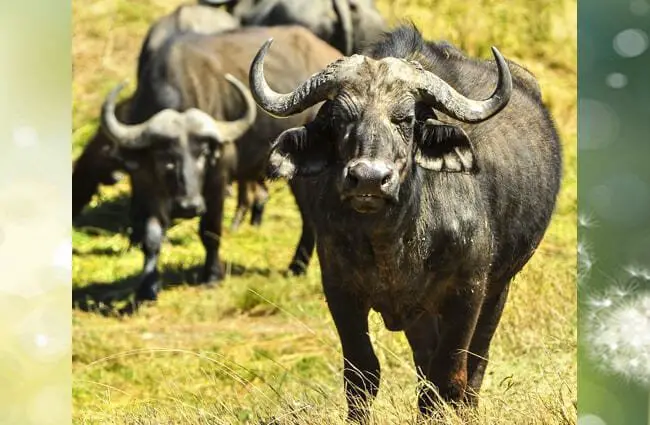
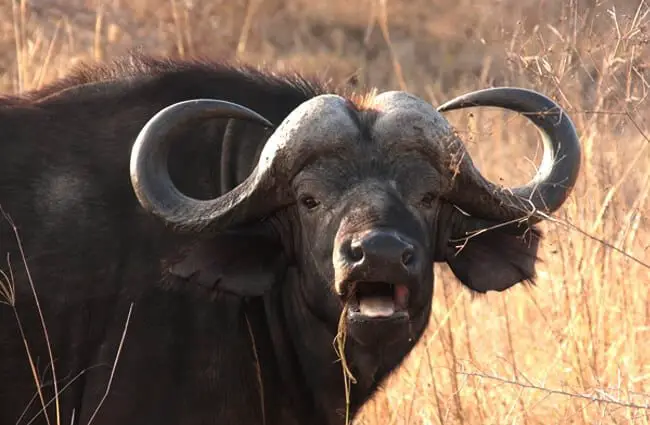

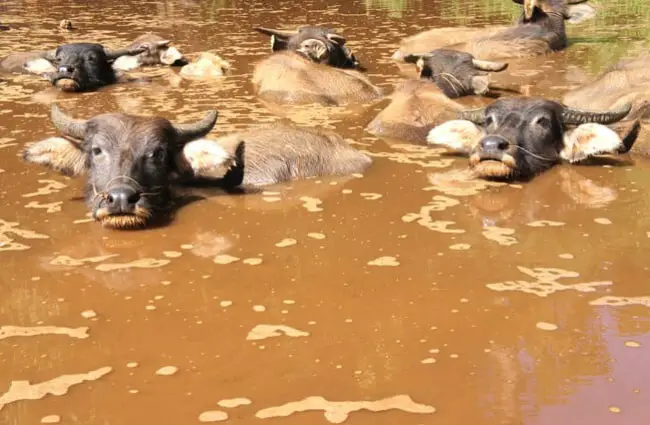
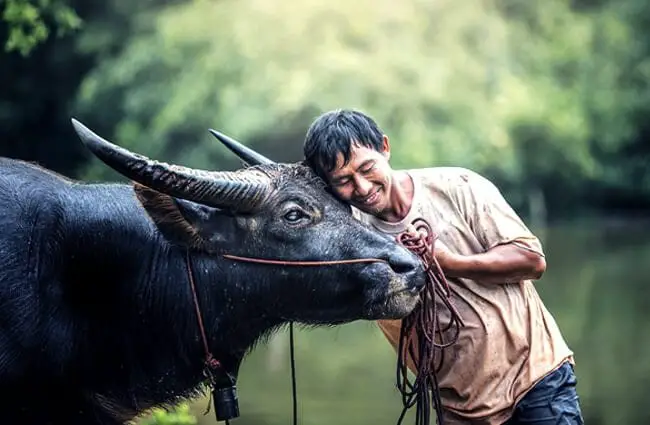



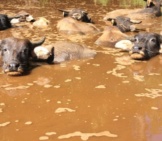

![Red Angus Closeup of a beautiful Red Angus cowPhoto by: U.S. Department of Agriculture [pubic domain]https://creativecommons.org/licenses/by/2.0/](https://animals.net/wp-content/uploads/2020/03/Red-Angus-4-238x178.jpg)












![Red Angus Closeup of a beautiful Red Angus cowPhoto by: U.S. Department of Agriculture [pubic domain]https://creativecommons.org/licenses/by/2.0/](https://animals.net/wp-content/uploads/2020/03/Red-Angus-4-100x75.jpg)

